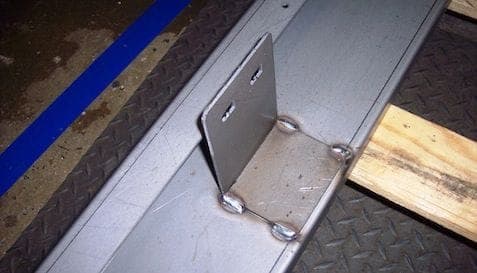
Curated with aloha by
Ted Mooney, P.E. RET

The authoritative public forum
for Metal Finishing 1989-2025

-----
MIG Welding Galvanneal: Effect on Opposite Surface?
Q. When a hot-rolled steel part is GMAW or GTAW stitch welded to a 12 GA (.096 THK) sheet of galvanneal (GALVN) steal, what affect does the welding process have on the corrosion protection provided by the GALVN on the other (opposite) side of the 12 GA GALVN sheet metal? The assembly is then electropainted to provide a required 600 hours of salt spray for NEMA 3R outdoor applications.

It is recognized the side where the weld is applied looses the protection at the weld; but it is protected from the elements since it is in the inside of the enclosure. But what affect does the welding process have on the protection provided by the GALVN painted steel on the exposed side at the weld?
I appreciate an expert's insight to this question.
Product Design - Columbia, South Carolina, USA
July 30, 2012
A. Hi Richard.
I'm not claiming to be the expert you are looking for, but a galvanneal/galvanize layer underneath paint protects the steel sacrificially (like a zinc anode protects the steel hull of a ship) as well as via the barrier layer it provides. Even if there is an area where the zinc is somewhat compromised, almost all of the protection will still be there. If opinion isn't sufficient to settle the matter, you can do the scribe for your 600-hour salt spray test right where you think the protection is weakest and see what you get.
Welding galvanized material can cause zinc fume fever, so if the process is not automated, make sure your welders have proper ventilation and/or respirator filters. Best of luck.
Regards,

Ted Mooney, P.E.
Striving to live Aloha
finishing.com - Pine Beach, New Jersey
August 2, 2012
Q. When welding on a ship hull below the waterline the heat affected zone can reach the coating causing damage. Does the heat affected zone create any oxide scales on the surface of the steel? Would these promote corrosion? If the coating isn't burned off does this create an under deposit corrosion cell? Thanks in advance.
Paul KrupaFailure Analysis - Washington, DC, USA
August 9, 2012
Q, A, or Comment on THIS thread -or- Start a NEW Thread